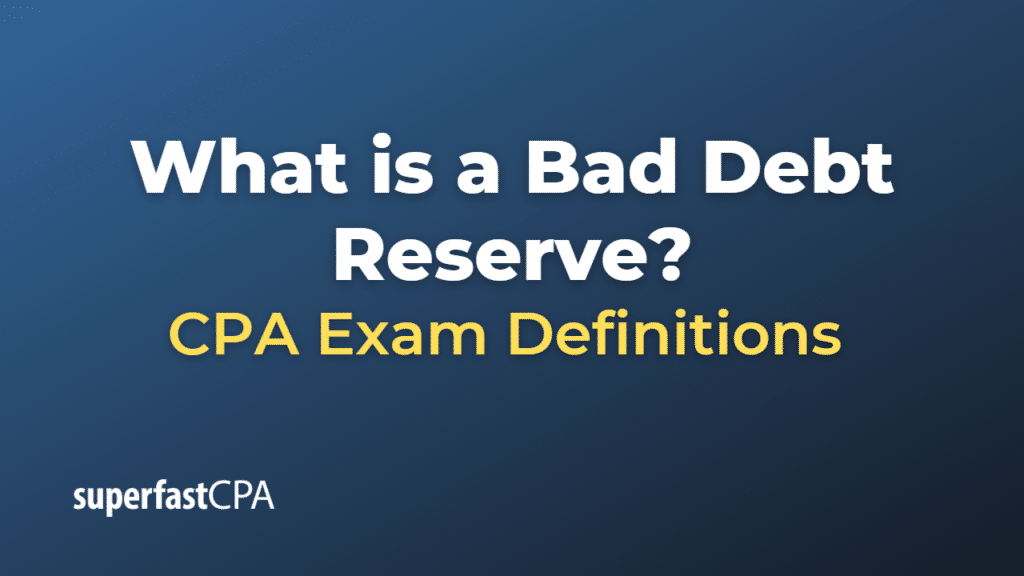Bad Debt Reserve
A bad debt reserve, also known as an allowance for doubtful accounts or allowance for bad debts, is an accounting tool used to estimate the portion of a company’s accounts receivable that may not be collectible. It represents the company’s best estimate of potential future credit losses due to customers not paying their outstanding balances.
The bad debt reserve is a contra-asset account, meaning it reduces the total accounts receivable reported on the balance sheet. It is used to show a more accurate representation of a company’s expected net receivables.
The calculation of bad debt reserve can be based on historical experience, industry trends, or a specific assessment of individual customer creditworthiness. There are two common methods for estimating bad debt reserves: the percentage of sales method and the aging of accounts receivable method.
- Percentage of Sales Method: This method calculates the bad debt reserve based on a fixed percentage of credit sales for a specific period. For example, if a company’s credit sales for the year were $100,000 and they estimate that 2% of credit sales will be uncollectible, the bad debt reserve would be $2,000.
- Aging of Accounts Receivable Method: This method groups outstanding receivables based on the length of time they have been outstanding (i.e., 30 days, 60 days, 90 days, etc.) and assigns a higher likelihood of non-payment to older accounts. The estimated bad debt amounts for each group are then summed to determine the total bad debt reserve.
The journal entry to record the bad debt reserve estimation is:
Debit Bad Debt Expense (Income Statement)
Credit Allowance for Doubtful Accounts (Balance Sheet)
Example of a Bad Debt Reserve
Let’s assume a company, XYZ Corp, has the following accounts receivable aging report for the end of the year:
- Current (0-30 days): $50,000
- 31-60 days: $20,000
- 61-90 days: $10,000
- Over 90 days: $5,000
Total Accounts Receivable: $85,000
Based on their historical experience, XYZ Corp estimates the likelihood of non-payment for each aging category as follows:
- Current (0-30 days): 1%
- 31-60 days: 5%
- 61-90 days: 15%
- Over 90 days: 50%
Now, we can calculate the bad debt reserve for each category:
- Current (0-30 days): $50,000 x 1% = $500
- 31-60 days: $20,000 x 5% = $1,000
- 61-90 days: $10,000 x 15% = $1,500
- Over 90 days: $5,000 x 50% = $2,500
Total Bad Debt Reserve: $500 + $1,000 + $1,500 + $2,500 = $5,500
To record the estimated bad debt reserve, XYZ Corp would make the following journal entry:
Debit Bad Debt Expense: $5,500 (Income Statement)
Credit Allowance for Doubtful Accounts: $5,500 (Balance Sheet)
Now, the balance sheet will report the net accounts receivable as:
Total Accounts Receivable: $85,000
Less: Allowance for Doubtful Accounts: $5,500
Net Accounts Receivable: $79,500
This provides a more accurate representation of the amount XYZ Corp expects to collect from its customers.













